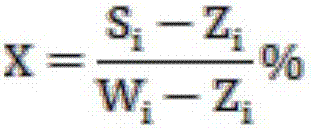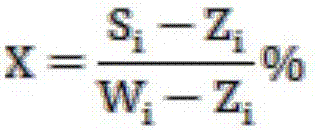Method for determining vegetable oil adulteration types and adulteration amount in sesame oil
A technology of sesame oil and vegetable oil, which is applied in the field of identification, can solve problems such as no quantitative basis, and achieve the effects of green detection efficiency, simple and fast operation, and good application prospects
- Summary
- Abstract
- Description
- Claims
- Application Information
AI Technical Summary
Problems solved by technology
Method used
Image
Examples
Embodiment 1
[0031] 1 Materials and methods
[0032] 1.1 Instruments and reagents Instruments: gas chromatograph (with FID detector) (Thermofisher, GC1310), HP-WAX capillary column (30m×0.25mm, 0.25μm film thickness); reagents: sodium chloride, sodium hydroxide (analytical pure), methanol (chromatographically pure), methanol solution of boron trifluoride (12%).
[0033] 1.2 Experimental method
[0034] 1.2.1 Instrument conditions Inlet temperature: 220°C; split ratio: 100:1; GC: initial temperature 100°C (hold for 5min), rise to 240°C at 4°C / min (hold for 5min); carrier gas: N 2 ; Detector temperature: 250° C.; hydrogen flow rate 35 mL / min; air flow rate 350 mL / min; injection volume 0.5 μL.
[0035] 1.2.2 Sample preparation
[0036] Weigh about 0.2g of the sample into a 50mL flat-bottomed flask, blow dry nitrogen for 1-2min, add 5mL of 2% sodium hydroxide methanol solution, reflux in a water bath at 80°C for 10min, add 5mL of 12% boron trifluoride methanol solution, and continue to refl...
PUM
 Login to View More
Login to View More Abstract
Description
Claims
Application Information
 Login to View More
Login to View More - R&D Engineer
- R&D Manager
- IP Professional
- Industry Leading Data Capabilities
- Powerful AI technology
- Patent DNA Extraction
Browse by: Latest US Patents, China's latest patents, Technical Efficacy Thesaurus, Application Domain, Technology Topic, Popular Technical Reports.
© 2024 PatSnap. All rights reserved.Legal|Privacy policy|Modern Slavery Act Transparency Statement|Sitemap|About US| Contact US: help@patsnap.com










